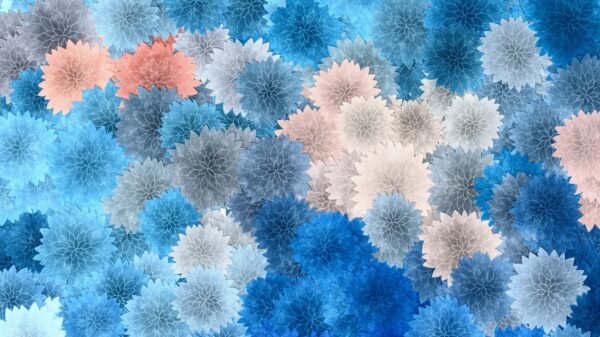Watercolor painting is a beautiful and delicate art form that has been around for centuries. It’s a medium that can evoke emotions, capture memories, and tell stories in the most colorful way possible. Whether you’re an experienced artist or just starting out, mastering watercolor techniques will take your creativity to new heights! In this blog post, we’ll explore some of the essential skills needed to become a proficient watercolorist. So grab your brushes and let’s dive into the world of watercolors!
Introduction to Watercolor Painting
painting of Watercolor is a beautiful and unique art form that has been around for centuries. Watercolor paintings are created by using a variety of water-based paints and brushes to create intricate designs, patterns, and images on paper.
Watercolor painting is a great way to relax and unwind, and it’s also a great way to express your creativity. If you’re new to watercolor painting, or if you’re looking to brush up on your skills, this guide will introduce you to the basics of watercolor painting, including the different types of paint and brushes available, how to mix colors, and how to create simple designs and patterns.
Essential Materials Needed for Watercolor
-A set of good quality watercolor paints. You don’t need a lot of colors to start out, just a basic palette of about 10-12 colors will do.
-A couple of brushes, including a small round brush and a larger flat brush.
-Watercolor paper. You can buy this at any art supply store. Make sure to get paper that is specifically made for watercolors, as regular printer paper will not work.
-A cup or jar of water to rinse your brushes in between colors.
-A towel or rag to dry your brushes on between colors.
-Pencil and eraser. You will use these to sketch out your design before you start painting.
Basics of Watercolor Technique
In watercolor painting, the artist applies pigments to a sheet of wet paper. The pigments are suspended in a vehicle of gum Arabic and water, and when applied to the paper, they spread out due to the absorbent nature of the paper.
There are three basic techniques that all watercolor painters should master: wet-into-wet, dry-brush, and glazing.
Wet-into-wet is the simplest of the three techniques and is perfect for beginners. To paint wet-into-wet, simply wet your brush and apply it to a wet area of your painting. The pigments will flow into each other, creating soft edges and a beautiful gradient effect.
Dry-brush is slightly more difficult than wet-into-wet but produces more interesting results. To paint dry brush, load your brush with pigment but make sure that most of the pigment is off of the brush before you apply it to your painting. This will create strokes that are dry with hard edges.
Glazing is the most difficult of the three techniques but can produce stunning results. To paint a glaze, first, paint a layer of color onto your painting and let it dry completely. Then, mix a new color with some clear water and paint over the first layer. The second color will react with the first layer, creating a third color that is different from either of the original two colors.
Color Theory and Mixing Colors
Color theory is the study of color and how it is used in art. It includes the study of color mixing, the color wheel, and the psychological effects of color. Color theory can be used to create more vibrant and interesting artwork.
Color mixing is the process of combining two or more colors to create a new color. There are three main ways to mix colors: additive, subtractive, and tinting. Additive color mixing is when light is added together to create a new color. Subtractive color mixing is when paint or ink is mixed together to create a new color. Tinting is when white is added to a color to make it lighter.
A color wheel is a tool that artists use to help them understand color relationships. The wheel is divided into three primary colors (red, yellow, and blue), three secondary colors (orange, green, and purple), and six tertiary colors (yellow-orange, red-orange, red-purple, blue-purple, blue-green, and yellow-green). The wheel can be used to find complementary colors (colors that are opposite each other on the wheel), split complementary colors (colors that are adjacent to each other on the wheel), and analogous colors (colors that are next to each other on the wheel).
Color has a powerful psychological effect on people. Colors can affect our moods, emotions, and behaviors. Warm colors like red, orange, and yellow can
Creating Textures and Details in Watercolor Paintings
There are a few things you can do to add interesting textures and details to your watercolor paintings. One way is to experiment with different brushstrokes. You can also add texture by using a variety of materials, such as salt, sand, or coffee grounds.
Another way to create interesting textures in your watercolor paintings is to paint on textured paper. This can give your painting an added dimension and make it more interesting to look at. There are a variety of textured papers available, so experiment until you find one that you like.
Don’t be afraid to get creative with your colors. Watercolors offer a wide range of possibilities when it comes to color mixing. So, don’t be afraid to experiment and see what new colors you can create.
Different Methods to Achieve Layers and Blending
There are a variety of different methods that artists can use to create layers and blending effects in their watercolor paintings. One common method is to simply paint one layer of color on top of another, allowing the colors to mix together slightly as they dry. Another popular technique is wet-on-wet painting, where colors are applied to a wet surface and then allowed to blend together.
yet another approach is dry-on-dry painting, which involves applying each successive layer of color to a dry surface. This allows for more control over the mixing of colors, but can also result in a more flat and less vibrant final painting. Experimenting with different techniques is the best way to find what works best for you and your particular style.
Working with Light and Dark Values
In watercolor painting, it is important to be able to control the values of your colors. The value refers to the lightness or darkness of a color. You can create different effects by working with light and dark values.
To create a light value, you will need to use white paint. You can also add water to your paint to lighten the color. To create a dark value, you will need to use black paint or add more pigment to your paint. You can also add water to your paint to darken the color.
experiment with different values to see what effects you can create. Try adding light and dark values next to each other to create contrast. You can also try blending two colors together to create a new value. have fun and be creative!
Troubleshooting Tips for Watercolor Painting
If you’re new to watercolor painting, you may find yourself struggling with some common issues. Here are a few troubleshooting tips to help you get the most out of your watercolors:
– Make sure your brush is properly wetted before starting to paint. This will help prevent your colors from looking dry and chalky.
– If your colors seem too light, try adding more pigment or using a wetter brush.
– If your colors are coming out muddy, try using less water or mixing your colors on a separate palette before applying them to your painting.
– Don’t be afraid to experiment! Watercolors can be unpredictable, but that’s part of the fun. Try different techniques and see what results you get.
Creative Examples of Watercolors
There are an endless amount of ways to use watercolors to create beautiful and unique paintings. Below are some examples of different techniques that can be used to create interesting effects.
– Wet on wet: This technique involves painting wet paint onto a wet surface. This can create soft, blurry edges and a dreamy look.
– Wet on dry: This technique is the opposite of wet on wet and involves painting wet paint onto a dry surface. This will give you more control over your brushstrokes and produce crisper lines.
– Drybrush: For this technique, you’ll need to load your brush with very little paint. Then, lightly drag the brush across your paper to create textured strokes.
– Glazing: To create a glaze, mix some water with your paint to thin it out. Then, paint this over an already-dried layer of paint. This will change the color of the underlying layer and add depth to your painting.
Conclusion
Watercolor painting is an incredibly rewarding and enjoyable activity, and with the right techniques, it can be a meditative and calming pastime. Mastering watercolor techniques can help you create stunning pieces that will bring joy to your eyes every time you look at them. With practice and patience, anyone can become a master of this art form. Now that you know all the basics, it’s time to get out your paints and start creating!










